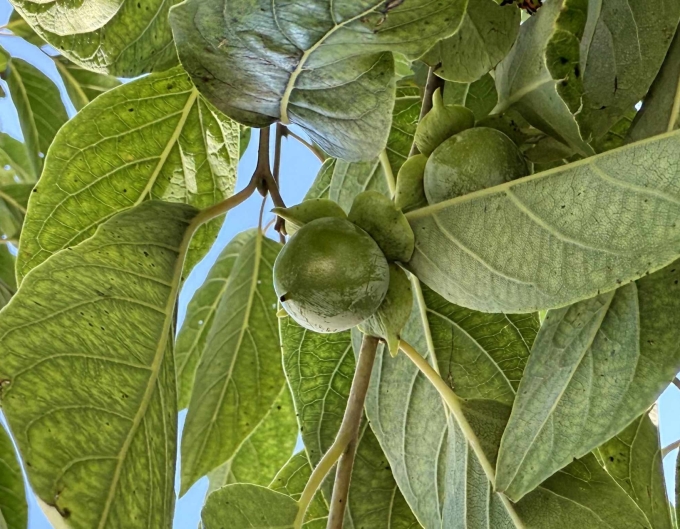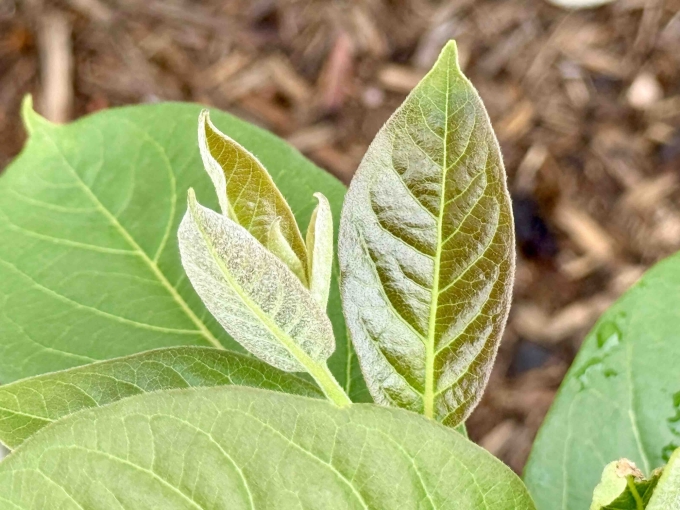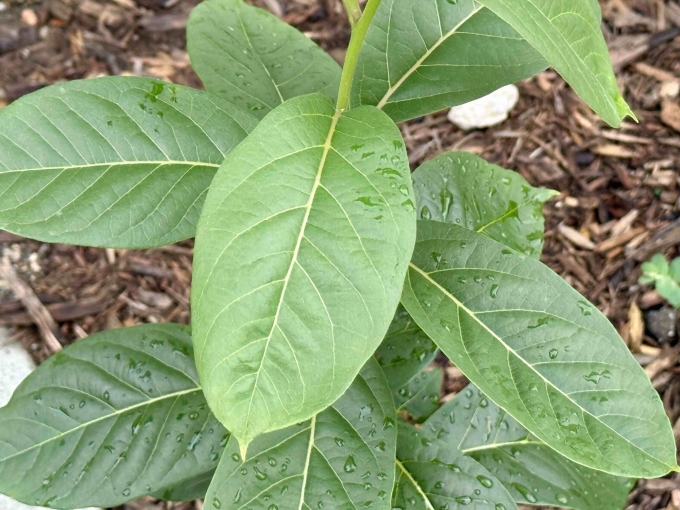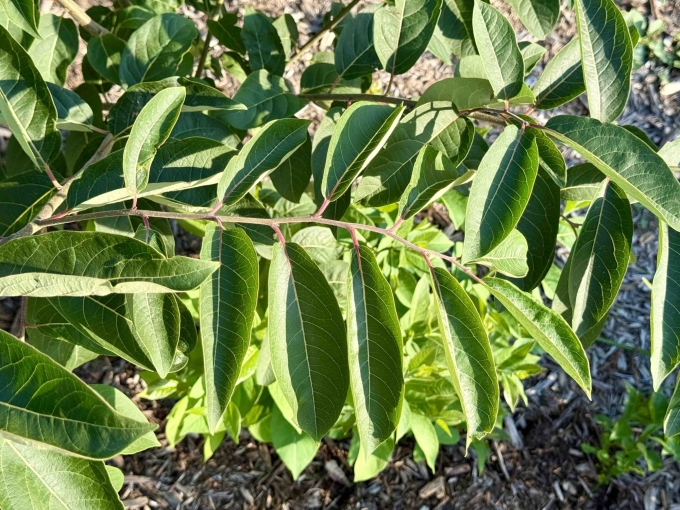Common Name: Common Persimmon
Family: Ebenaceae
Plant Type: Deciduous Tree
Hardiness Zones: 4–9
Height: 30.0 to 60.0 feet
Spread: 20.0 to 35.0 feet
Bloom Time: Late spring (May–June)
Bloom Description: Small, fragrant, bell-shaped yellowish flowers
Sun Exposure: Full sun to part shade
Water Needs: Medium
Soil Preference: Well-drained; tolerates a wide range of soils including sandy, loamy, and clay
Management Level: Low
Suggested Use: Edible landscapes, wildlife plantings, naturalized areas, shade trees
Attracts: Pollinators, especially bees; fruits attract birds, deer, raccoons, and other wildlife
Tolerates: Drought, poor soils, occasional flooding
Notable Features: Edible fruit, high wildlife value, distinctive blocky bark, attractive fall color
Native Range: Eastern and Central United States, including southeastern Nebraska
Nebraska Growing Notes:
Common Persimmon is hardy across much of Nebraska, especially in the southeastern region. It prefers sunny, well-drained locations but is tolerant of challenging soils. Female trees produce sweet, pulpy orange fruits in fall, but require a male pollinator nearby for fruit set. Ideal for food forests, orchards, and native plantings.
Landscape Use:
Useful in edible landscapes, native hedgerows, or as a specimen tree in larger residential or educational gardens. Offers four-season interest with fragrant flowers, edible fruits, glossy summer foliage, and golden-orange fall color. Blends well with pawpaw, American plum, and native shrubs.
Caution:
Fruits can be a mess if planted near walkways or driveways. Astringent when unripe; best eaten soft or used in baked goods. Ensure both male and female trees are present for fruit production.
Garden Locations:
Sources:




